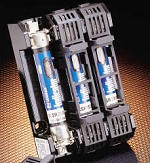 Littelfuse, an Illinois-based manufacturer and seller of fuses and electronic components, filed a voluntary disclosure with the Bureau of Industry and Security (BIS) and for its efforts got whacked with a $221,000 fine. The details can be found in yet another inexplicably large (and slow to download) file posted on the BIS website.
Littelfuse, an Illinois-based manufacturer and seller of fuses and electronic components, filed a voluntary disclosure with the Bureau of Industry and Security (BIS) and for its efforts got whacked with a $221,000 fine. The details can be found in yet another inexplicably large (and slow to download) file posted on the BIS website.
According to the proposed charging letter, Littelfuse engaged in exports of ceramic yarn classified under ECCN 1C010.c. Sixty two of the exports were without required licenses; others were eligible for the LVS license exception but in those cases Littelfuse failed to file four required semiannual reports for those exports. Littelfuse was charged with violating section 764.2(a) of the EAR with respect to the unlicensed exports, rather than under section 764.2(e) which requires knowledge of the violation. The failure to file the semiannual reports was charged under section 764.2(i).
As is normally the case, the charging documents provide little helpful detail as to what actually happened in this case, but it’s easy to make an educated guess. It appears that small quantities of ceramic yarn are used in certain fuse applications. In particular, Littelfuse’s U.S. Patent No. 4,409,729 explains the use of the ceramic yarn produced by 3M and known as Nextel 312 to form the core of a slow-blowing fuse. Such ceramic yarn is designed to tolerate high temperatures (naturally), and thus falls under ECCN 1C010.c which covers inorganic filamentary materials with a specific modulus exceeding 2.54 x 106 m and a melting, softening, decomposition or sublimation point exceeding 1,649 °C. A previously-reported settlement agreement entered into between BIS and Hexcel Corporation affirms that Nextel 312 is classified under ECCN 1C010.c.
With that background in mind, the $221,000 fine does seem somewhat excessive. To begin with, it seems likely that Littelfuse didn’t realize that Nextel 312 was export-controlled and that using it as a fuse core would subject that fuse to export controls as well. When it did discover that, it acted like a good citizen and told BIS about the problem. Beyond that mitigating factor, it seems clear that only small amounts of the ceramic yarn were exported. This is relevant because the reason that such fibers and materials is controlled is their usefulness in creating surface materials for missiles and space vehicles. It would certainly take many, many more than 67 fuses with ceramic yarn cores to permit the fabrication of surface materials for space vehicles and missiles.
Of course, defenders of BIS here will be quick with the usual refrain: “we could have fined Littelfuse $3 trillion*, so they should be happy it was only $221,000.” But if the BIS truly wants to encourage people to make voluntarily disclosures, it is more persuasive to point to the fine itself, rather than to a larger fine that the company might have paid in the uncertain event that BIS discovered the violation.
___________
 Permalink
Permalink
Copyright © 2007 Clif Burns. All Rights Reserved.
(No republication, syndication or use permitted without my consent.)

 Posted by
Posted by  Category:
Category: 

